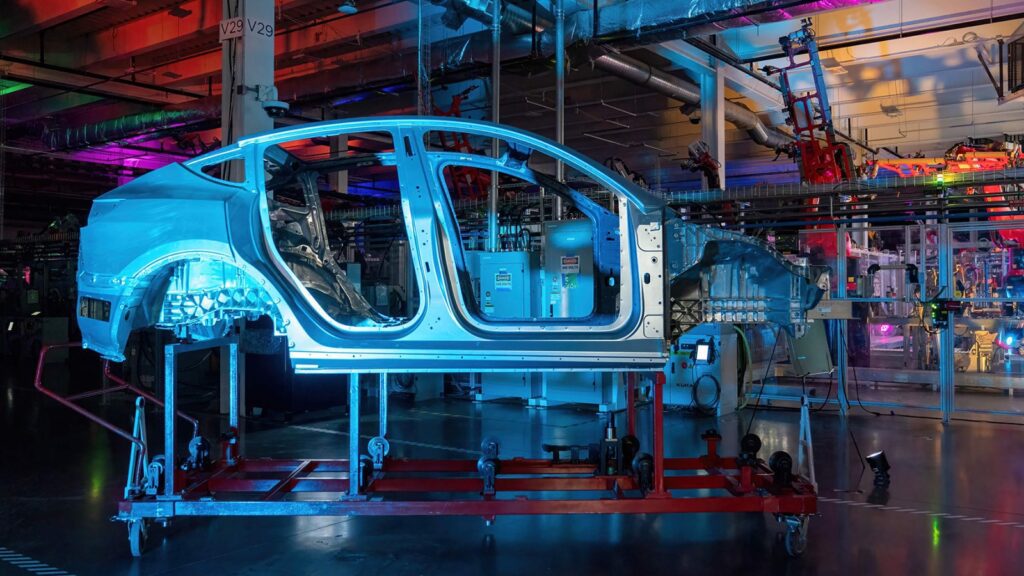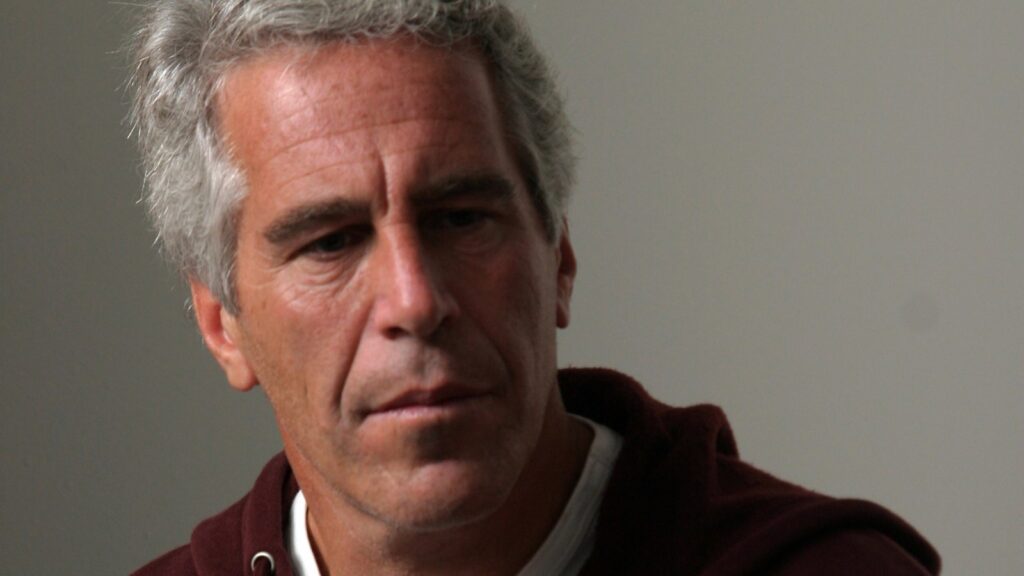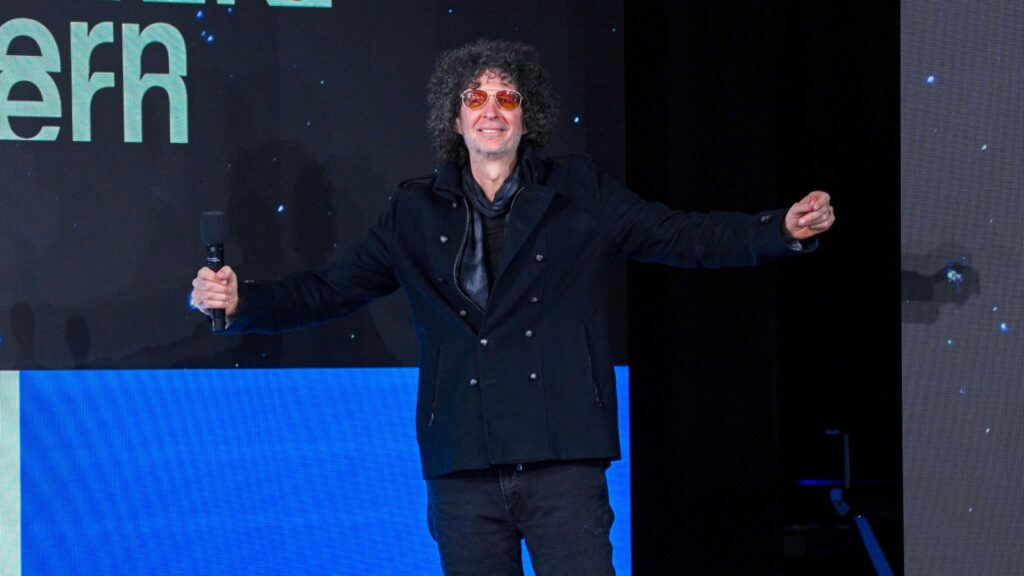Elon Musk Bet Big on a Self-Driving ‘Robotaxi.’ Can Tesla Actually Build One?
Back in April 2019, during a presentation on Tesla’s progress toward a fully autonomous driving system, Elon Musk made a startling prediction: “Next year for sure, we will have over a million robotaxis on the road,” he said.
What the CEO meant was that Teslas sold with a “Full Self-Driving” option would, after an over-the-air software update, have this capability enabled, and owners could have their vehicle autonomously and safely drive them anywhere, without the need for human intervention. Even better, they’d be able to send it out into the world as a robotic Uber, collecting passive income from riders who used it. Musk estimated gross yearly profits of $30,000 for owners who did this. “It is financially insane to buy anything other than a Tesla […] if you buy a car that does not have the hardware necessary for Full Self-Driving, it is like buying a horse,” he concluded.
Needless to say, 2020 did not bring a fleet of Tesla robotaxis with FSD that revolutionized car travel as we know it. Nor did the automaker crack the core problem of totally autonomous driving, a theoretical breakthrough which Musk has spent an entire decade claiming is imminent. (The current FSD system still needs to be “supervised” by an attentive driver able to take over in case of malfunction, according to Tesla’s owner manual.) Since then, however, Musk has said that the company is “worth basically zero” if it can’t develop self-driving cars; this year, he confirmed that Tesla remains all-in on the robotaxi concept, and is even developing a new vehicle model for this purpose that was originally to be unveiled on Aug. 8. A week ago, Bloomberg reported that event had been postponed until an unspecified date in October, with Musk later claiming in a tweet that he had requested “what I think is an important design change to the front” and that “the extra time allows us to show off a few other things.”
Yet even as Tesla’s stock price continues to climb, fueled in part by bullish investors who believe in Musk’s leadership and the dream of the robotaxi, there is no reason to trust that the company is any closer to autonomous driving than it was all the other times Musk promised it. In fact, there are signs that Tesla cannot make the product that its chief executive, recently granted a $44.9 billion pay package by loyal shareholders, has long described.
“He has become refocused on it because things aren’t going so well in other places,” says Dan O’Dowd, a tech entrepreneur and co-founder of Green Hills Software who has made millions developing secure operating systems for military and government clients. “Their market share is dropping, and because they’ve really focused so much on this self-driving stuff, they haven’t brought out a new model in five years.” Meanwhile, manufacturers of electric vehicles in China and Europe are getting more competitive, offering models at lower price points. The Chinese company BYD, for example, last year launched the Seagull, an electric hatchback that sells for just $11,000.
O’Dowd, a former Tesla enthusiast who still owns several models, is also the founder of the Dawn Project, which aims to ensure the integrity of software systems that, were they to fail, pose a direct risk to human safety. Tesla’s current FSD technology, the organization contends, is too dangerous to be allowed on the road — in the past two years, O’Dowd has spent handsomely for Super Bowl ads that highlight the dangerous defects of the software, and urge viewers to boycott the company. They include clips of the Dawn Project’s experiments with FSD that show Teslas blowing past stopped school buses and running over child-sized mannequins in the middle of the street.
In O’Dowd’s view, there’s nothing to back up Musk’s robotaxi hype. “He’s nowhere near a robotaxi,” he says. “It’s just going to be the metal and plastic. It’s going to be the vehicle. But the software isn’t ready.” O’Dowd points to past instances of Tesla misrepresenting technological advancements, such as a 2016 video intended to demonstrate FSD that, in a deposition for a lawsuit against the company, a top Tesla engineer testified had been staged, with the car actually crashing into a fence during filming. (Musk’s critics also like to recall the 2021 presentation in which he revealed a “prototype” for humanoid robot that was just a man dancing in a skin-tight bodysuit.)
“This is no different than Elizabeth Holmes faking the tests from the Theranos blood machines,” says hedge fund manager Mark Spiegel of Stanphyl Capital, which has shorted the company. For years, Spiegel has bet against Tesla, arguing that it is vastly overvalued and its promotions have no basis in reality. Where it comes to the robotaxi, Spiegel says, Musk is facing a “fraudster’s dilemma” thanks to a hardware issue. (Tesla, which reportedly dissolved its public relations department in 2020, did not return a request for comment on this claim or others quoted in the article.)
“Pretty much every non-Tesla autonomy expert in the world says that for a driverless car to operate safely, it requires LiDAR [light detection and ranging] and radar in addition to cameras, but Teslas have only cameras,” Spiegel explains. He’s referring to the kind of sophisticated sensors found in robotaxis currently operated by the transportation companies Waymo, a subsidiary of Google parent Alphabet; Zoox, Amazon‘s autonomous vehicle service; and Cruise, owned by General Motors. These vehicles are also programmed with custom maps for the restricted regions in which they travel: San Francisco, Los Angeles, Phoenix and Las Vegas.
“Musk has been claiming for years that he can do it just with cameras,” Spiegel says, “because he didn’t want to spend the money to install radar and LiDAR, the latter of which is fairly expensive.” Despite the Teslas sold with supposed FSD tech lacking these sensors, Musk has continued to tell investors and customers that the vehicles are equipped with all the hardware necessary to upgrade to robotaxis once a game-changing software update is available. “Now he’s trying to unveil a robotaxi prototype and is stuck between a rock and a hard place,” Spiegel says, as “it won’t work safely without LiDAR and radar, and yet if he admits that, he has a massive liability for the millions of consumer cars he sold without those sensors, claiming they weren’t needed.” Indeed, a judge already ruled in May that Tesla must face a proposed class-action suit from customers alleging fraud and negligence due in part to its “representations that Tesla vehicles have the hardware needed for full self-driving capability.”
Spiegel also points out that Musk is pitching the robotaxi as though Waymo, Zoox, and Cruise don’t already exist. Best-case scenario, Tesla would just become another competitor in a market where, so far, nobody has made any money. “Nevertheless, Musk is desperately trying to change the Tesla investment story to robotaxis and robots as if no one else has them,” Spiegel says, “and does so like an old-fashioned penny stock promoter, except that he’s running a company with a nearly $800 billion market cap.” O’Dowd says, moreover, that Tesla has apparently not yet contacted various regulators in California, Nevada, and Arizona — the three states with cities where you can currently hire robotaxis — who have to issue permits for the company to operate its version. “They haven’t even started the process of applying for a permit to do autonomous driving in California, so there’s no way they’re going to get it anytime soon,” he observes.
Ed Niedermeyer, journalist and author of Ludicrous: The Unvarnished Story of Tesla Motors, who has written about the company for Rolling Stone, says the robotaxi fanfare is one in a “series of escalating gambits to push up the company’s stock price and raise capital to survive.” His book details how this pattern began early in Tesla’s history and accelerated with the assurance of FSD in 2016, “which Tesla’s entire future now appears to rest on,” Niedermeyer says.
The automaker, Niedermeyer explains, is trying to compensate for the lack of pricier, more effective sensors and custom maps by “trying to make AI models that operate everywhere,” and safely, “which is much harder.” But the cheap sensors “mean Teslas have weaknesses that no amount of AI can overcome,” he says, adding, “Tesla’s cameras also have zero redundancy, so if you lose a camera to mud or bugs or anything else, the system is completely blind in that sector.” Niedermeyer feels that Tesla has been successful at selling the “Full Self-Driving” myth because “it matches the public’s mental model for what a self-driving car should be — you own it and it takes you everywhere — but it’s the only company selling that model because it’s completely technologically non-viable.”
“Musk absolutely sold something Tesla can’t deliver, and he has been doubling down since 2016,” Niedermeyer says; this doomed quest has “now outrun all of the actual good stuff Tesla does around electric vehicles, and its inevitable failure makes the company’s wild valuation look massively risky.” It doesn’t help, either, he notes, that aside from the customer lawsuit, Tesla is now facing all sorts of government investigations over the ways it has sold its driver-assistance systems.
In April, the National Highway Traffic Safety Administration launched a probe into Tesla’s Autopilot, a driver-assistance feature less advanced than FSD that is only meant to be used for supervised highway driving. The agency is assessing whether a software recall Tesla performed on more than 2 million vehicles in December adequately addressed concerns laid out in a previous NHTSA investigation into collisions involving Autopilot. (Their report in that case found that the term Autopilot “may lead drivers to believe that the automation has greater capabilities than it does and invite drivers to overly trust the automation.”) Meanwhile, the Department of Justice and Securities and Exchange Commission are examining whether the company committed fraud by misleading investors about the limits of its self-driving technology.
A major question here is whether this scrutiny of FSD, combined with a failure to achieve the level of autonomy Musk has envisioned, will lead to Tesla’s downfall. Both Spiegel and O’Dowd say that despite Musk’s insistence on expanding into AI and robotics, the company would still have value without them — it would just be that of a regular electric vehicle manufacturer. If the “robotaxi charade,” as Spiegel puts it, were to come to an end, then “Tesla’s stock would crash to the value of other automakers, which sell for around 4x to 10x earnings, which would be $8 to $20/share” for Tesla, he predicts, compared to its current price of around $250 a share.
Tesla’s extreme valuation has endured for “longer than seems logical,” O’Dowd admits, because Musk “has a great talent. He tells people fairy tales in return for money. Always at the end of it — ‘Why am I doing this?’ — is some fantastic result,” whether it’s colonizing Mars with SpaceX, curing paralysis with Neuralink, or saving the climate with Teslas. (Which, O’Dowd says, ignores the fact that the electricity used to power the cars mostly comes from burning fossil fuels.) In the case of autonomous Teslas, O’Dowd notes, Musk is selling the idea that self-driving cars will be so much safer than human drivers that they can save the lives of the more than a million people killed in traffic collisions globally each year.
“That’s how he justifies everything he does,” O’Dowd says. “Now, it may be true that we will be able to develop self-driving cars that are sufficiently good that we save a million lives a year. It actually is possible. But it’s not going to be Tesla.” Other companies are too far ahead on the technology, Tesla hasn’t made a model that’s affordable to a large enough customer base, and they’ve committed to the magic trick of one day turning Teslas currently on the road into autonomous vehicles — which seems to remain a hopeless fantasy.
But it’s unlikely to keep Musk from doing what he does best: exaggerate. “Whenever he needs something, whenever he wants something, he just makes up another thing,” O’Dowd says. Which is, presumably, why we’ve heard so much about the robotaxi of late, and why O’Dowd, who back in 2016 was convinced by Musk’s since-forgotten claim that a driverless Tesla would soon make a cross-country journey from Los Angeles to New York, tries to help others see through the empty hype with the Dawn Project. “We try to point that out,” he says. “Remember when he said this? Or show them the tweets, so that at some point you realize you’ve been lied to enough times.”
As for Musk? He may have been telling this story too long to stop believing it now.





